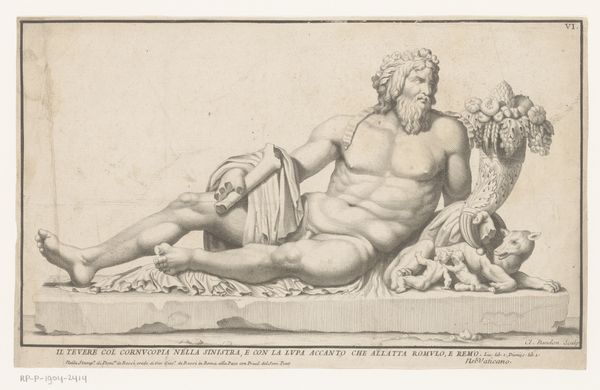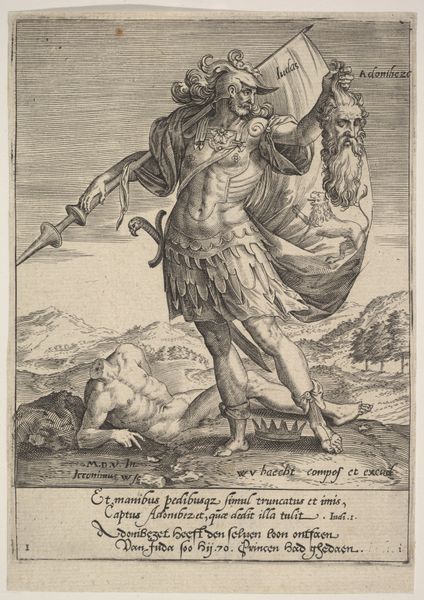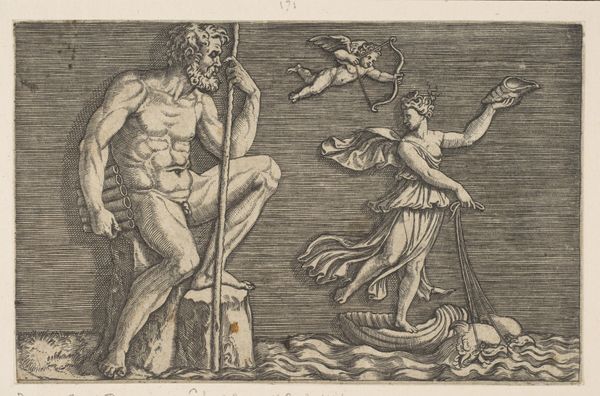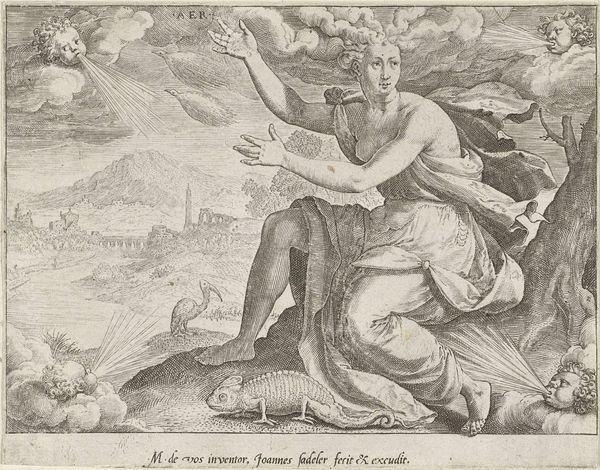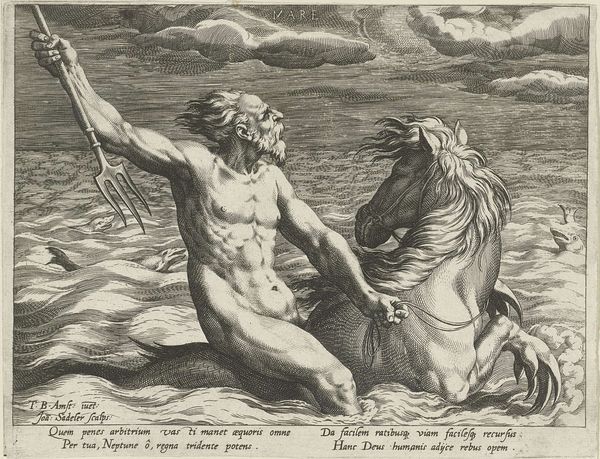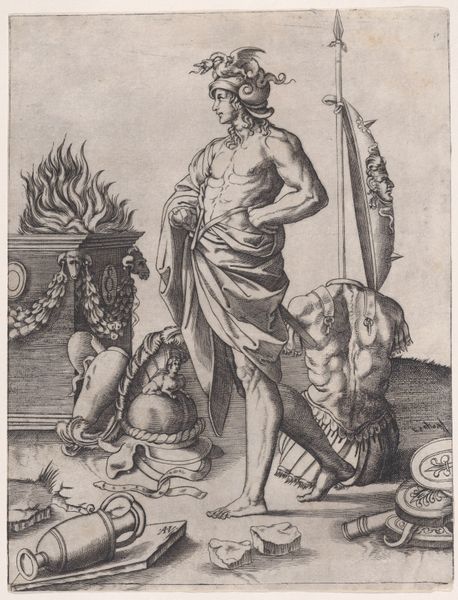
Speculum Romanae Magnificentiae: The Ocean God 1560
0:00
0:00
drawing, print, engraving
#
drawing
# print
#
classical-realism
#
figuration
#
ancient-mediterranean
#
men
#
line
#
history-painting
#
nude
#
engraving
Dimensions: sheet: 11 13/16 x 13 15/16 in. (30 x 35.4 cm)
Copyright: Public Domain
Editor: This is Nicolas Beatrizet’s 1560 engraving, “Speculum Romanae Magnificentiae: The Ocean God.” The figure is really impressive; the lines create a real sense of depth and weight. What strikes you when you look at it? Curator: I am intrigued by the formal arrangement of line and space, and the modulation of light created by the engraving technique. Notice the linear precision, employed to articulate the musculature and the cascading drapery. How would you characterize the spatial organization? Editor: I’d say it is predominantly frontal. The god faces us directly, and even the creature at his side seems to acknowledge our presence, despite being integrated into a less defined area. Curator: Indeed. The composition functions as a constructed surface. While attempting a representational goal, its success resides instead in the balanced tension between the tactile and the visual. Consider how the hatching marks and variations in line thickness not only describe form but generate a palpable surface texture. How does this linearity affect your sense of the figure's volume? Editor: It’s interesting… It gives him a solidity, almost like he is made of stone despite the flat medium of engraving. So, you're saying the technical skill used almost transforms the image beyond just a depiction of the god, into an object of interest itself. Curator: Precisely. The subject matter serves as a vehicle, but the formal articulation becomes the end. What begins as a representation transitions into an aesthetic object defined by its intricate and self-contained visual system. Editor: I see, so it’s less about *who* he is, and more about *how* he is rendered that holds the meaning? It’s fascinating how closely considering technique opens up so many possibilities. Curator: It's about recognizing the autonomy of form.
Comments
No comments
Be the first to comment and join the conversation on the ultimate creative platform.
